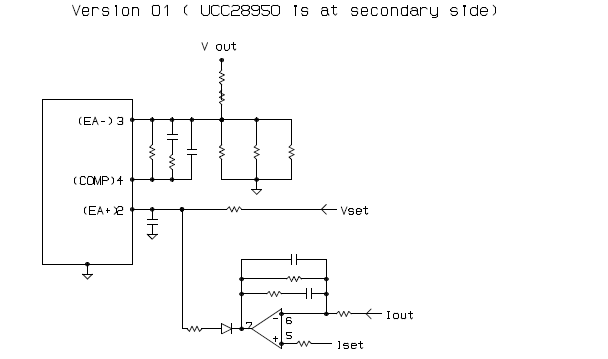Hi,
I want to use the UCC28950 in a battery charger design. I would like to have Constant Current / Constant Voltage with Automatic Crossover. This is typically done by "OR-ing" the voltage loop and current loop (error amps) with diodes.
Can I operate the UCC28950 with external error amp(s)?
Here is a good explanation of Constant Current / Constant Voltage with Automatic Crossover:
The category of DC power supplies discussed in this section changes AC line voltage into DC voltages. The most common and versatile regulated DC power supply is the constant current (CC) or constant voltage (CV) type which as the name implies can provide either a constant current or constant voltage within a certain range, see image below.
The working characteristic of this power supply is called a constant voltage/constant current automatic crossover type. This permits continuous transition from constant current to constant voltage modes in response to the load change. The intersection of constant voltage and constant current modes is called the crossover point. The figure below shows the relationship between this crossover point and the load.
For example, if the load is such that the power supply connected to it is operating in the constant voltage mode, a regulated output voltage is provided. The output voltage remains constant as the load increases, up until the point where the preset current limit is reached. At that point, the output current becomes constant and the output voltage drops in proportion to further increase in load. On some power supply models, the crossover point is indicated by a front panel LED indicators. The crossover point is reached when the CV indicator goes off and the CC indicator comes on.
Similarly, crossover from the constant current to the constant voltage mode automatically occurs from a decrease in load. A good example of this would be seen when charging a 12-volt battery. Initially, the open circuit voltage of the power supply may be preset for 13.8 volts. A low battery will place a heavy load on the supply and it will operate in the constant current mode, which may be adjusted for a 1 amp charging rate. As the battery becomes charged, and its voltage approaches 13.8 volts, its load decreases to the point where it no longer demands the full 1 amp charging rate. This is the crossover point where the power supply goes into the constant voltage mode.

Thanks,
Derek





